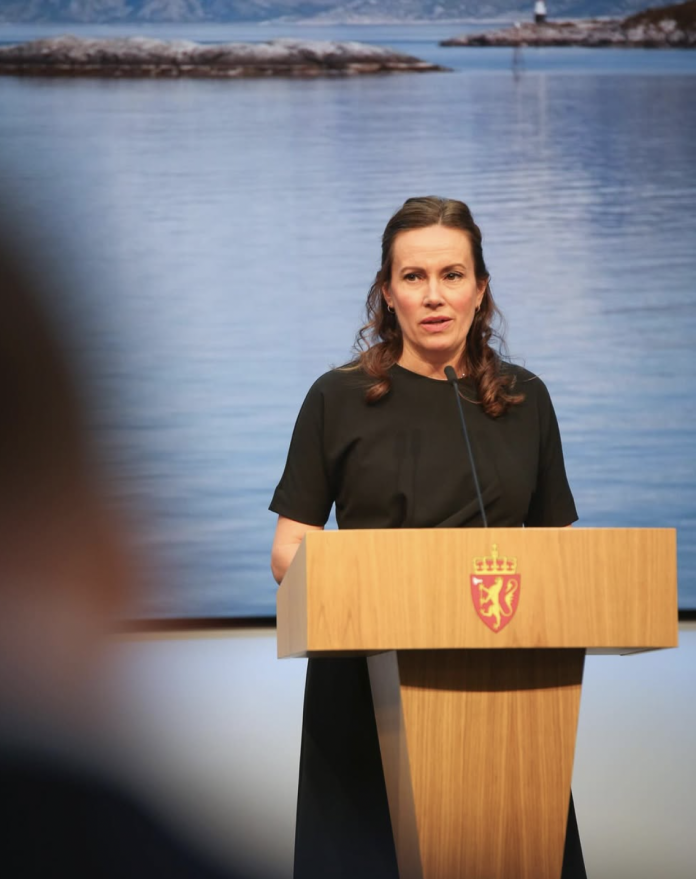Norway to replace traffic light system with lice quotas and mortality tax.
The Norwegian government will dismantle the traffic light system used to regulate salmon farming growth and replace it with a new framework based on tradable lice emission quotas and a tax on mortality and escapes.
Fisheries and Oceans Minister Marianne Sivertsen Næss presented the new White Paper for aquaculture at Lerøy’s facility in Hjeltefjorden on Thursday. The reforms are intended to strengthen incentives for good environmental performance, fish welfare, and sustainable growth.
“It shall pay to operate responsibly,” Næss said.
How does Norway’s traffic light system for salmon farming work?
The existing traffic light system divides the coast into 13 production zones, each colour-coded every two years—green, yellow, or red—based on the estimated impact of lice on wild salmon. The system determines whether farms in each zone can increase, maintain, or must reduce their production.
Næss said the current framework punishes or rewards all producers in a zone, regardless of individual performance. “The traffic light system punishes or rewards all fish farmers in the same area, regardless of whether the individual operates in an environmentally sound manner or not. The system opens for collective free riders,” she said.
Under the new proposal, each site will be allocated a cap on the number of lice larvae it can emit. These lice emission quotas will be tradable. A tax on production loss, including fish deaths and escapes, will also be introduced. While the government plans to start the tax at a low level, it will be increased over time.
“If a facility operates well, has low lice emissions, low environmental impact, and good animal welfare, then it can increase production without limitations,” Næss said.


